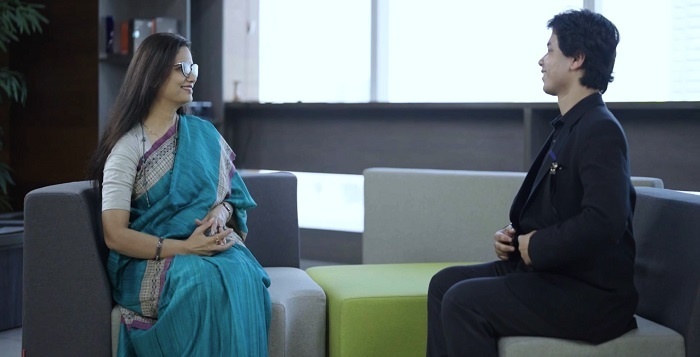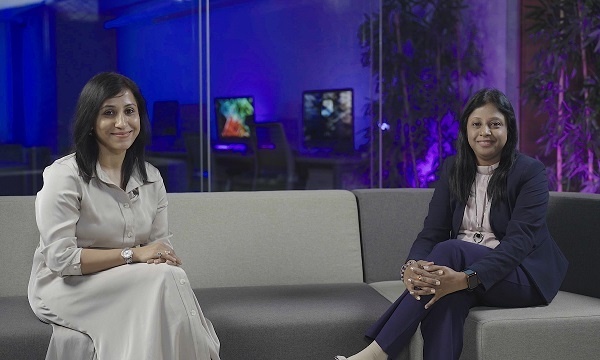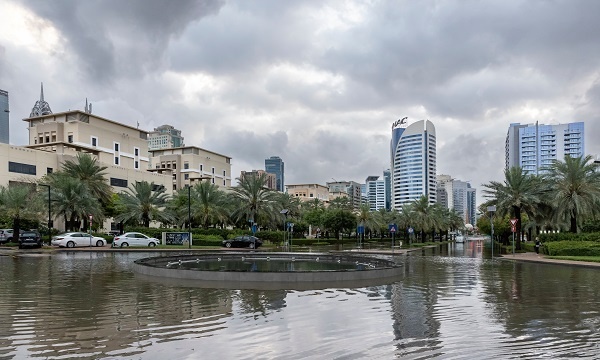On International Women’s Day (IWD), in an exclusive interview with HCLTech Trends and Insights, Dr. Nidhi Pundhir, Vice President, Global CSR, HCLTech & Director, HCLFoundation, explores why inclusion and gender equality are crucial in new-age workplaces. She says strategic frameworks and indicators are necessary to achieve gender equality.
Amid challenges of fostering inclusion in CSR — including breaking taboos and working across layers of society to empower girls and women — leadership plays a vital role in championing the cause in an organization. Remaining conscious and reviewing initiatives consistently are essential to ensure effectiveness.
In this Q&A with Aditya Kumar Srivastav, Dr. Pundhir explored these topics and established how workplaces can create an inclusive environment.
How important is this year’s IWD theme of ‘Inspire Inclusion’?
On IWD, we celebrate inclusion in many ways that are critical and important. This occasion reminds us of equality in all its forms. It’s good to see that corporates and communities are celebrating it in so many ways. However, there shouldn’t be a need for such a day.
But then, in terms of human rights, we’ve gone through a lot: there have been oppression, evidence that girls and women didn’t get what they were supposed to. Therefore, we had to emphasize on the need for women empowerment to bring them on par with men. Celebrating this day reminds us: ‘we need to still work toward equality for women’.
How do you define inclusion and why is it important in today’s workplace?
At workplaces, the fundamental purpose of all coming together is that we are equally productive and contribute as much as we can.
Women do form 50% of the demographic dividend. So, if we don’t include them in the workforce, we have already lost 50% productivity. Inclusion is just not about men and women, but about people with disabilities and the transgender community also. It’s about everybody who has the potential to contribute. They must get the right opportunities.
It's also about respect, dignity and human rights ‘for all’. It’s not about a certain segment or a part of humanity, it’s about including all and giving them opportunities based on their talent, merit and skills.
The moment we say all, women are included. Inclusion is a concept that needs to be executed. For that, there are several steps that need to be undertaken. We [at HCL] have strategic frameworks and the right kind of indicators. However, if we still look at the global indicators, there’s a need to do more.
In the realm of CSR, what inspired you to focus on inclusion and how?
If we look at Indian directions (from NITI Aayog) to the larger demographic indicators in health, education and skill development, we’ve still not reached the desirable 30% mark in many ways [when it comes to gender equality].
It’s wishful thinking to be there at 50%. But we still aren’t there at 30% in most of the segments. There’s a need for us to have clear framework where, via the gender lens and agenda, we [HCLTech and HCLFoundation] always have this tool that we apply. We ask:
- Are we gender-blind?
- Aren’t we looking at gender at all?
- Have we reached a stage of gender-neutrality?
So, even being gender-neutral is slightly above being gender-blind, where we just don’t see gender-neutral would mean there’s no discrimination per se. If we’re just looking at capability and talent, we suddenly realize that just by being gender-neutral, we fail to notice girls because they didn’t have the right type of opportunities.
That’s why we go deeper and start working on opportunities. That’s when we say: ‘we are moving from a stage of gender-neutrality to being gender-sensitive’. When we become gender-sensitive, that’s when we start creating opportunities and spaces where women and girls can come and invest in their own potential. It’s mostly a matter of opportunities.
We become gender-transformative when we rise above that — where both are moving equally and have equal opportunities, forgetting their gender. That’s when truly gender-transformative spaces are created.
In CSR, the same principle and philosophy apply. However, here it’s more critical because we work directly with communities. We work in far-flung areas, where they struggle with poverty and are struck with various kinds of topographical and geographical distancing. Women and girls haven’t received equal chances of development here.
They’re vulnerable and do get left behind. So, we make special efforts to bring them into mainstream development. The focus, strategy and execution of HCLTech and HCLFoundation CSR are much larger, deeper and wider.
What are challenges that we face when focusing on inclusion? How can organizations overcome these?
The big challenges here are taboos around gender-stereotypes and cultural nuances. We need to not go against culture, but there are nuances that we need to study and understand.
One of the bigger challenges that we face when we work in the communities is to break the taboos to work across layers of society, where we suddenly see that there are hidden hindrances. We need to work so that we aren’t standing against a culture or structure that society has. But if we do work in collaboration with communities or stakeholders, it’s always possible.
For example, our education strategy, where we work in girls’ schools, co-ed schools and through a child parliament model. We work through election mechanisms and loyalty. These things bring children on an equal platform.
Another big challenge we face is the gender psyche that men and boys develop while growing up in the same culture. So, how do we really share with them that space of equality? Therefore, working with women, girls, boys and men simultaneously is equally important.
In terms of collaboration, how does leadership play a role in fostering inclusion? How do you personally champion this within your team?
At HCLTech and HCLFoundation, we are all for it — be it in the board or senior leadership, mid-leadership or across youngsters. Young women joining us in technology is simply great. It’s creating a very positive and conducive environment.
Our development professionals and social scientists are working in very tough circumstances, in rural villages and the remotest urban slums. They’re working with various communities throughout the day and traveling extensively. This breaks the myth that women don’t travel.
Our Sheroes and champions don’t hesitate or take a backfoot — be it flood, fire, earthquake or COVID days. Out there on the field, they are all doctors, nurses and caregivers who saved us from COVID.
It’s a very conducive environment. When we place our job advertisements, we ensure that interviewees get equal opportunities. Decisions happen based on merit and competency.
Are there any metrics? How do we measure the effectiveness of the inclusion initiatives?
From being gender-blind to gender-transformative, there are tools for our gender audit. We, as leaders, wear a gender lens, while sharing a job description or an ad or strategic plan. We’re gender-sensitive and take decisions consciously. That’s our biggest tool.
However, there are more than that where one can conduct physical gender audits. This starts with data. We’d like 50-50 division in the workforce. Of our 5.5 million program beneficiaries, over 50% are girls and women.
But we need to go deeper with what’s happening with them. Do they have equal spaces to share across the table? Are they part of the decision-making processes? When it comes to income, do they have bank accounts of their own? Do they have rights to their income?
At the end of the day, it’s about true equality. So, the gender lens continuously conducts gender audits across all our projects.
What advice would you give to the leaders and the organizations who are working to enhance their inclusion initiatives?
Remain sensitive — and more than that — become transformative. The difference is that are we able to truly celebrate inclusion? One should continuously conduct productivity assessment, never compromise on merit, develop potential in such a manner that both get opportunities. Do it consistently.
From the board level to the frontline level, we really need to remain conscious and review consistently. Are we doing enough? What more can we do? How do we really prepare young men to take care of children? How do we really build that culture of celebrating equality and gender roles?





